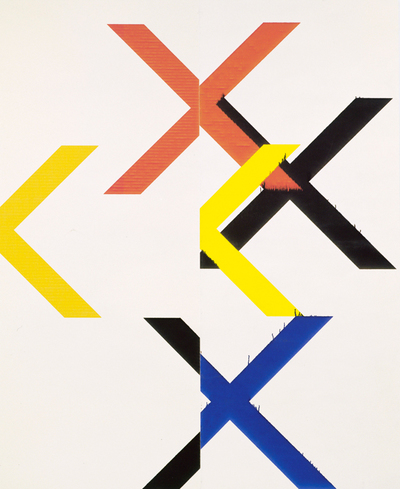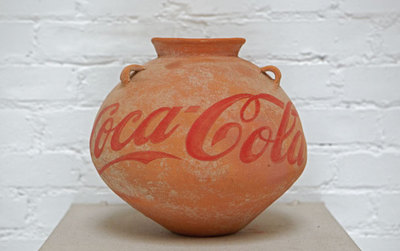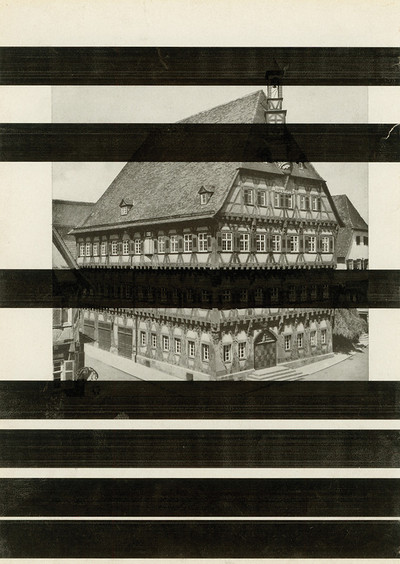New York, New York…
By Robert Moeller
In a lot of ways, New York settles down to business in the fall. Yes, the city is still full of tourists but generally speaking they cluster, cameras held high in the air, at the construction site where the World Trade Center once stood or in the midst of the blinking and gussied-up insanity of Times Square. Fall’s cooler temperatures revitalize, daredevils on delivery bikes whip through the streets, and taxis and pedestrians take turns filling the intersections, enjoying a brief truce enforced by the traffic lights.

Wade Guyton, Untitled, 2010
The art world, reenergized by the prospect of a new season also comes to life. Both museums and galleries, like dueling banjos, try to one-up each other with chords either dauntingly new or classically proven. The Metropolitan Museum of Art, boisterous as a crowded subway car, spills over with an antic energy that defies the notion that art be viewed in solitude and quiet. Construction noise echoes through the galleries as school kids from all over the city follow their teachers in loud conga lines that rope through the crowds. There is no sign of the menacing sophistication or drab formality always present at the MFA here in Boston. Rather, the old museum explodes with a unique power as history and life collide.

Andy Warhol, Nine Jackies, 1964
Two exhibitions there, Regarding Warhol: Sixty Artists, Fifty Years and Faking It: Manipulated Photography before Photoshop, keenly demonstrate the continuing vitality of the place. And while there is no doubt of Warhol’s influence on any number of artists, that lineage might be as subtle as it is profound and notable not for any direct or recognizable approach to subject matter or material but instead to an overarching attitude, a hazy nod of acceptance, if you will. A litany of contemporary artists is represented here, yet the overall effect is somewhat muted and confused. However, this is as fine a collection of contemporary work as you will see gathered anywhere.

Ai Weiwei, Neolithic Vase with Coca-Cola Logo, 2010
Images have been altered for a long time, to suit any number of purposes, and in the pursuit of goals both lofty and humorous. The botched (imagined) haircut given to Elvis Presley before his induction into the army by a wire service photo editor surely rates as the worst celebrity crew cut in history. Not only that, but it looks as though a portion of Presley’s head was removed in the photo-editing process. Not as much of his head, perhaps, as the man holding both a sword and his own head but you get the point. Faking It: Manipulated Photography before Photoshop is a witty commentary on a process we now take for granted. It includes darker examples of the process as well. More than a few Soviet functionaries were edited out of photographs after their arrest and execution, erased from the history books. This is a brilliantly conceived show and to discover that it is underwritten by Adobe, the creators of Photoshop, is just an added bonus.

Exhibition view of Wade Guyton OS at the Whitney Museum of America Art
The mid-career survey of Wade Guyton’s work at the Whitney is the type of show that propels an artist into the stratosphere. Wade Guyton OS, the OS referring to operating system, is the most talked about show in New York City right now. The exhibition, which includes paintings, photography, sculpture, and drawings, is an exuberant meditation of our technological present and a brooding, almost foreboding casting of our technological futures. Guyton uses inkjet printers to create his work and the results are a stuttering array of lines and marks that somehow fully articulate a caustic uneasiness. Two enormous new paintings, created for the exhibition, are like electronic scars left skidding across the walls of the Whitney. One is reminded of a malfunctioning fax machine, its paper unspooling an inky series of lines, pausing to overlap, smudge, then continuing on. Guyton clearly is poised, from a generational perspective, to plunge easily into a mid-career that might be the most watched—and worth watching—in a long time.

Wade Guyton, Untitled, 2002
In Chelsea, as usual, the Hi-Line is full to bursting (yes, the tourists again) and the Pace Gallery has a large Chuck Close show including paintings, prints and tapestries. Close, a fellow traveler in the New York art world for a long time now, never strays far from his subject matter. New portraits of Cindy Sherman and Phillip Glass are on view and despite their newness already read as familiar seeming. With his usual fluidity, using paint, fabric, and other media, Close’s mark making is starting to look brittle and polished, formulaic, even. That’s not to say the show isn’t worth seeing, but rather that you just begin to feel that the work (and subject matter) becomes repetitive and in the process what once was vital seems remote.
Further downtown, the New Museum has a mid–career retrospective of the German artist Rosemarie Trockel. The museum itself still doesn’t feel lived in yet. Not that you can smell the paint drying but it certainly doesn’t resonate with a past like, say, the Met, or the somewhat dilapidated Whitney. Of course, it is new, relatively speaking, and to date, served well by ambitious programming.

Exhibition view of Rosemarie Trockel: A Cosmos at the New Museum
Rosemarie Trockel: A Cosmos is a vast jumble of things, nervously organized and without a hair out of place, so to speak. The exhibition includes knit paintings, ceramics, books, drawings collage, drawings, collage, and installations. The show also includes work by little-known outsider artists. In part, it is a wide-ranging “Cabinet of Curiosities” And yes, there is also a twenty-seven-pound lobster. In theory, this all should be difficult to unpack yet there is a certain amount of restraint present that galvanizes Trockel’s clusters of objects into something cohesive. A series of knit paintings gradually become undone, pieces of cardboard collaged into bird-like figures, glass-cased vignettes full of internal dialogue… Here there is a hinting at Joseph Cornell’s work, on a grander scale, bigger, without the neuroses. Trockel, despite the array of objects at her disposal, remains very much in control.
